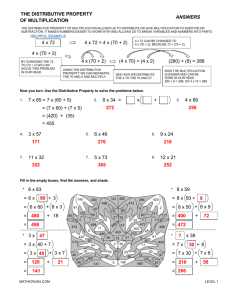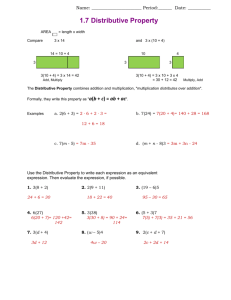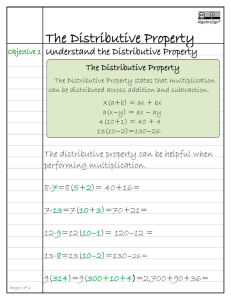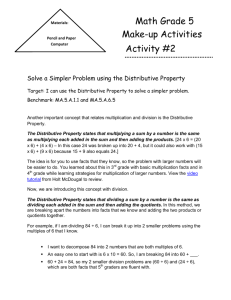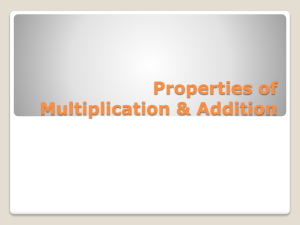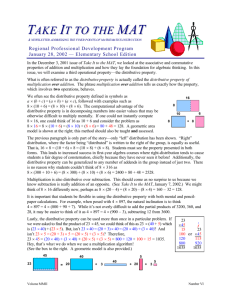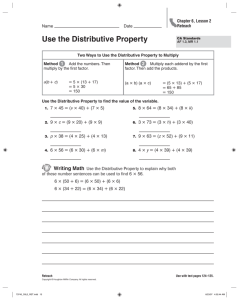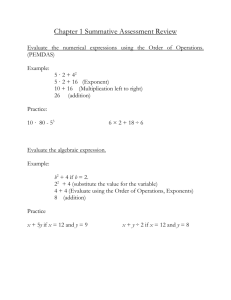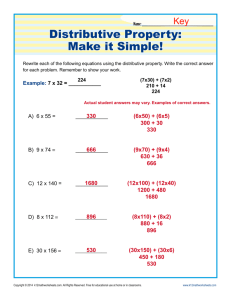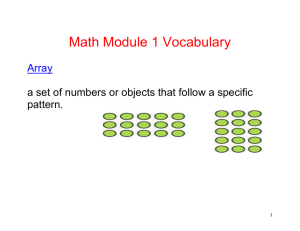Distributive Property of Multiplication over Addition
advertisement
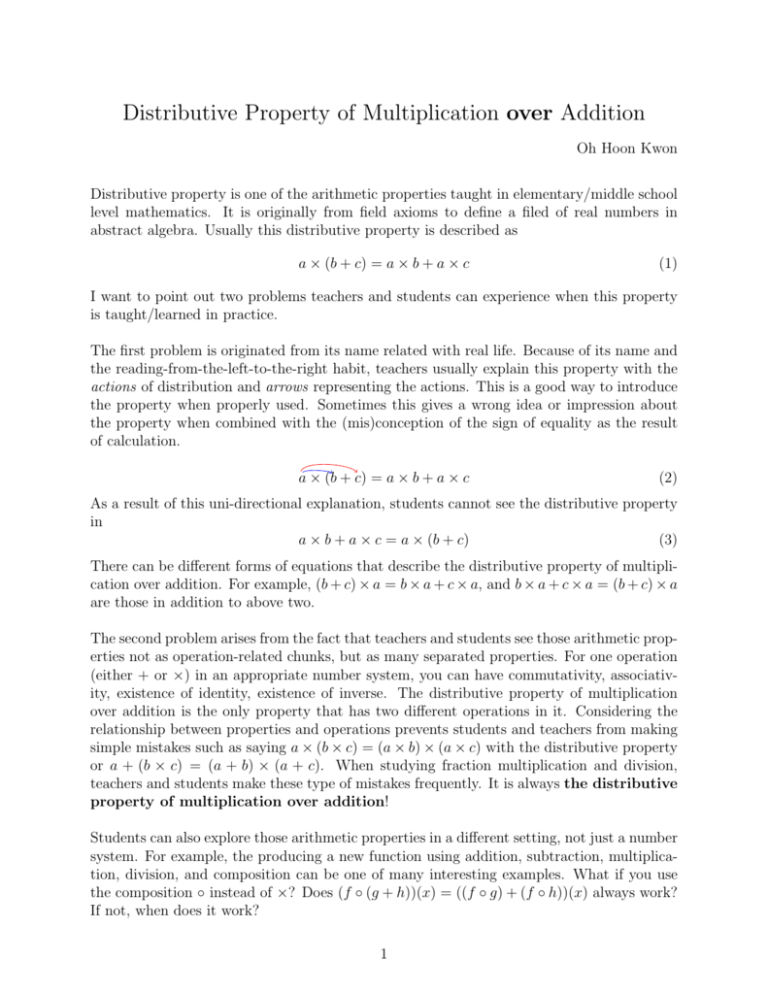
Distributive Property of Multiplication over Addition Oh Hoon Kwon Distributive property is one of the arithmetic properties taught in elementary/middle school level mathematics. It is originally from field axioms to define a filed of real numbers in abstract algebra. Usually this distributive property is described as a × (b + c) = a × b + a × c (1) I want to point out two problems teachers and students can experience when this property is taught/learned in practice. The first problem is originated from its name related with real life. Because of its name and the reading-from-the-left-to-the-right habit, teachers usually explain this property with the actions of distribution and arrows representing the actions. This is a good way to introduce the property when properly used. Sometimes this gives a wrong idea or impression about the property when combined with the (mis)conception of the sign of equality as the result of calculation. a × (b + c) = a × b + a × c (2) As a result of this uni-directional explanation, students cannot see the distributive property in a × b + a × c = a × (b + c) (3) There can be different forms of equations that describe the distributive property of multiplication over addition. For example, (b + c) × a = b × a + c × a, and b × a + c × a = (b + c) × a are those in addition to above two. The second problem arises from the fact that teachers and students see those arithmetic properties not as operation-related chunks, but as many separated properties. For one operation (either + or ×) in an appropriate number system, you can have commutativity, associativity, existence of identity, existence of inverse. The distributive property of multiplication over addition is the only property that has two different operations in it. Considering the relationship between properties and operations prevents students and teachers from making simple mistakes such as saying a × (b × c) = (a × b) × (a × c) with the distributive property or a + (b × c) = (a + b) × (a + c). When studying fraction multiplication and division, teachers and students make these type of mistakes frequently. It is always the distributive property of multiplication over addition! Students can also explore those arithmetic properties in a different setting, not just a number system. For example, the producing a new function using addition, subtraction, multiplication, division, and composition can be one of many interesting examples. What if you use the composition ◦ instead of ×? Does (f ◦ (g + h))(x) = ((f ◦ g) + (f ◦ h))(x) always work? If not, when does it work? 1
